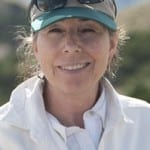D Magazine journalist Dawn McMullan reported on the accomplishments of SMU paleobotanist Bonnie F. Jacobs in the monthly magazine’s “Dallas’ Big Thinkers” article, which published Sept. 21.
Jacobs, one of a handful of the world’s experts on the fossil plants of ancient Africa, is part of a team of paleontologists hunting plant and animal fossils in Ethiopia’s prolific Mush Valley, as well as elsewhere in Africa. Jacobs is an associate professor in SMU’s Roy M. Huffington Department of Earth Sciences.
In January Jacobs’ blogged from the field in Ethiopia for The New York Times’ “Scientist at Work” blog, which features scientists’ first-person accounts of their field work as it unfolds day-by-day.
McMullan’s D Magazine piece focuses on six of the region’s scientists who are making a difference in their scientific field: “We gave the world the microchip and the margarita machine. Here are six cool scientists whose brains are making waves,” McMullan writes.
Read the full story at D Magazine.
EXCERPT:
By Dawn McMullan
D Magazine
27-Million-Year-Old Pollen | Dr. Bonnie Jacobs
Associate professor in the Roy M. Huffington Department of Earth Sciences at SMU and blogger for the New York Times
Bonnie Jacobs’ favorite place to go as a kid was the American Museum of Natural History. She also had a thing for Egyptian artifacts. During visits to the beach, she collected snails and shells, which her mother later discovered, usually by following the smell.“Growing up, I didn’t know the difference between paleontology and archeology,” she says. “My parents, as wonderful as they are, didn’t know the difference either.”
She eventually became a noted paleobotanist. Earlier this year, she wrote for the New York Times’ Scientist at Work blog, chronicling her work in Ethiopia, where she studies plant fossils to learn about the history of our changing climate. Her work there began years ago, when her husband, Louis Jacobs, a vertebrate paleontologist at SMU, got a job in Kenya. At the time, Jacobs was near the beginning of her Ph.D. research. This was before email. She worried about how she was going to transport boxes of manuscripts from Arizona to Africa. She worried that she wouldn’t finish her Ph.D. She even worried she wouldn’t find a good microscope.




